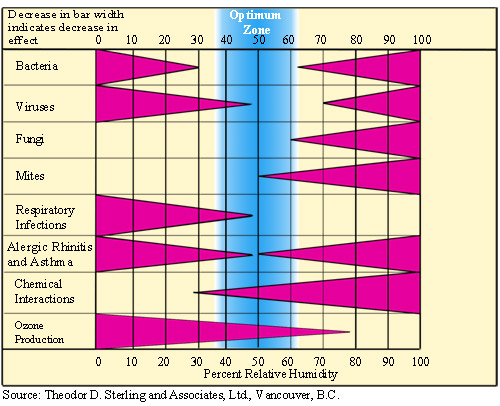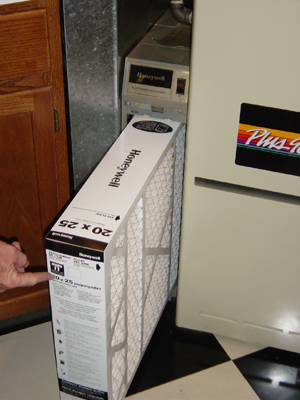
|
Do I need an Energy True Performance Design and Test Protocol Custom Load Calcs and System Design House Performance Testing and Remediation Carbon Monoxide and Combustion Air Quality Air Conditioning 3rd Party |
Indoor Air QualityWhat is Indoor Air Quality? (Sometimes
called IAQ.) Why should you be concerned if you have a
vented crawl space Below are excerpts from the EPA web site on indoor air quality:
To read more of this article, click the link below: http://www.epa.gov/iaq/pubs/insidest.html#Intro1 Air Quality Testing and ConsultingTradewinds Appropriate Technologies utilizes an array of diagnostic tools and procedures to ascertain the indoor air quality of houses and suggests methods and strategies to remediate indoor air quality (IAQ) issues. Armed with the results from our testing and analysis, our consultants help you devise a Master Plan to make sure you resolve all the issues that meet your priorities and keep within the budget you set for your projects. By drafting a Master Plan for your home, you can take advantage of the new building materials and Best Practices available today, such as spray foam insulation or Energy Recovery Ventilation (ERV). Tradewinds can contract with you to accomplish the work, pass your project on to our preferred contractors, or supervise your own contractors in the remediation. Humidity Issues One IAQ issue that crops up repeatedly is high humidity and moisture. This can lead to biological growth and rot. For people, that can translate into possible allergies, rashes or asthma from toxic mold and mildew. Properly designed and properly performing air conditioning equipment goes a long way to taking care of the high humidity in a home. Sometimes, a stand-alone or whole house dehumidifier is the proper answer for humid conditions when the AC equipment isn't enough. You can only know if your systems are performing properly by testing. As stated elsewhere, the national average is only a dismal 57% of expected performance on new installations Additionally, according to ASHRAE, modern, high-efficiency A/C equipment might not remove adequate amounts of humidity from the air in humid, hot-humid and mixed hot-humid climates in a tightly built house. That means that East Texas, Central Texas, Coastal Texas, South Central Texas and North Central Texas are at risk for high humidity in a tightly built house. Another important issue to consider is low humidity. This can be caused from air conditioning systems that run too much due to poor performance. The very low humidity irritates nasal passages and can lead to health issues. We test your HVAC systems to determine if they are performing properly and outline a series of corrections if they are not. Unfortunately, the average system is not able to function as designed by the manufacturer. Comfort and humidity issues are the norm rather than the exception. The chart below shows the optimum zone for human health and comfort with some IAQ issues caused by high or low humidity. You will notice that most of the worst things happen outside the optimum human comfort zone.
Checking the Design of your Systems By doing a thorough load calculation on the house under its present conditions and discovering how your AC is performing, you can discover if the AC is able to remove enough humidity from the house without using dedicated dehumidification or if the systems are properly installed for the correct design conditions for your location. Test for Infiltration and Exfiltration Following our philosophy of "Measuring and not guessing", we recommend testing your home for infiltration and exfiltration. Infiltration is defined as air leaking into your home through uncontrolled pathways, such as leaks around windows or through framing, walls, ceilings, etc. Exfiltration is defined as air leaking out of your home through uncontrolled pathways. By testing the house, you can discern any problem with migration of moisture and particulates into the structure through problem areas. Particular attention must be paid to crawl spaces and attics, if present. Some of the most promising new techniques are the sealed and conditioned attic and crawl spaces. Be sure to ask us about them. You can read more about non-vented attics here Or download this pdf from our site. You can read more about sealed crawlspaces here To see what we often see under your houses, click here. This is not for the faint of heart. Seal your crawl space—it never should have been vented if you live in the South!Download Closed
Crawl Spaces, an explanatory brochure about the
science behind non-vented crawl spaces and detailed instructions how
to seal them. My house is tight, what about fresh air? As houses are tightened against air infiltration, the need for ventilation becomes more acute. Indoor pollutants and humidity begin to rise. There is a wide range of equipment and strategies for mechanical ventilation available today. We design custom solutions for proper ventilation depending on actual testing. We don't just guess and shoot from the hip, we measure. Air Purification and Filtration
The biggest problem with adding whole-house air filtration is incorrect sizing of the filter media for the existing air conditioning systems. Often folks get good, filtered air but blow the performance of their air conditioning. Sometimes the air conditioner is so stressed with the back pressure from the new filtration system that the equipment fails prematurely. If your return-air ductwork is inadequate to add filter media, you might consider adding a stand-alone air purification unit. It is also possible to change out your return plenum for a larger one or to install multiple filter grilles. Some people are asking for Ultra-violet light treatment of air and we are knowledgeable about those as well. Our trained consultants can help you discover the best design for your equipment. The Bottom Line—Tradewinds can help you Tradewinds can help you discover a pathway to creating a dry, comfortable, healthy home. Whether you are building new or remodeling an older home, we can give you the data you need to make intelligent decisions. Attention! Please note: Our expertise lies in
building science, Heating-Ventilation-and Air Conditioning, We do not test indoor
air for any contaminants, toxins or pollutants There are other, very
qualified companies that provide those services We are not a licensed or certified Indoor Air Quality Inspection Company We have chosen not to
become licensed or certified Please contact a licensed mold specialist for these issues |
|||
|
|
|

 Filtering
of the air is now more promising than ever before. Today's HEPA-rated
air filters can clean particulates from the air.
Filtering
of the air is now more promising than ever before. Today's HEPA-rated
air filters can clean particulates from the air.